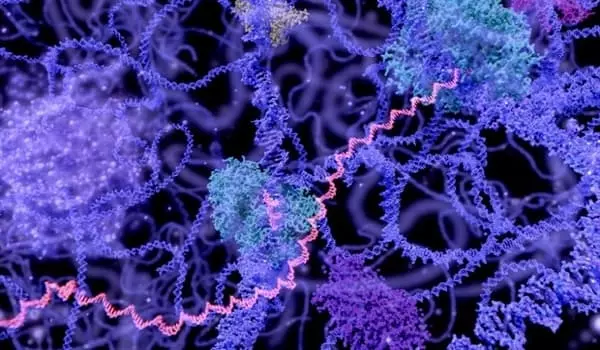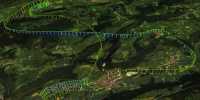Chemists have discovered how nuclear bodies called nucleoli to interact with chromosomes in the nucleus, and how those interactions help the nucleoli exist as stable droplets within the nucleus, using computer simulations.
A cell stores all of its genetic material in the form of chromosomes in its nucleus, but that’s not all that’s stored there. The nucleus also contains small bodies known as nucleoli, which are clusters of proteins and RNA that aid in the formation of ribosomes.
MIT chemists have discovered how these bodies interact with chromosomes in the nucleus, and how those interactions help the nucleoli exist as stable droplets within the nucleus, using computer simulations.
Their findings also suggest that chromatin-nuclear body interactions cause the genome to form a gel-like structure, which aids in the formation of stable interactions between the genome and transcription machinery. These interactions aid in the regulation of gene expression.
We discovered how nuclear bodies called nucleoli to interact with chromosomes in the nucleus, and how those interactions help the nucleoli exist as stable droplets within the nucleus, using computer simulations. This model has inspired us to think that the genome may have gel-like features that could help the system encode important contacts and further translate those contacts into functional outputs.
Bin Zhang
“This model has inspired us to think that the genome may have gel-like features that could help the system encode important contacts and further translate those contacts into functional outputs,” says Bin Zhang, the study’s senior author and the Pfizer-Laubach Career Development Associate Professor of Chemistry at MIT, an associate member of the Broad Institute of Harvard and MIT.
Yifeng Qi, an MIT graduate student, is the paper’s lead author, and it was published today in Nature Communications.
Modeling droplets
Zhang’s research focuses on modeling the genome’s three-dimensional structure and analyzing how that structure influences gene regulation. He wanted to expand his modeling to include nucleoli in the new study. These small bodies, which break down at the start of cell division and then re-form later in the process, are made up of over a thousand different RNA and protein molecules. The nucleoli play an important role in the production of ribosomal RNA, which is a component of ribosomes.
According to recent research, nucleoli exist as a collection of liquid droplets. This was perplexing because, under normal conditions, multiple droplets should eventually fuse together into a single large droplet to minimize the system’s surface tension, according to Zhang. “That’s where the problem gets interesting,” he says, “because in the nucleus, those multiple droplets can somehow remain stable across an entire cell cycle, over about 24 hours.”

Zhang and Qi investigated this phenomenon using a technique known as molecular dynamics simulation, which can simulate how a molecular system changes over time. The proteins and RNA that make up the nucleoli are randomly distributed throughout the nucleus at the start of the simulation, and the simulation tracks how they gradually form small droplets.
The researchers also included chromatin, the substance that makes up chromosomes and includes proteins as well as DNA, in their simulation. The MIT team calculated the interaction energy of individual chromosomes using data from previous experiments that analyzed the structure of chromosomes, allowing them to provide realistic representations of 3D genome structures.
The researchers were able to observe the formation of nucleoli droplets using this model. They discovered that if they modeled the nucleolar components without chromatin, they would eventually fuse into a single large droplet, as expected. When chromatin was added to the model, however, the researchers discovered that the nucleoli formed multiple droplets, just as they do in living cells.
The scientists also discovered why this occurs: When the nucleoli droplets become tethered to specific regions of the chromatin, the chromatin acts as a drag, preventing the nucleoli from fusing to each other.
“Those forces effectively arrest the system into those small droplets, preventing them from fusing together,” Zhang explains. “Our research is the first to highlight the significance of this chromatin network, which has the potential to significantly slow down fusion and stop the system in its droplet state.”
Gene control
Nuclear speckles and the nuclear lamina, an envelope that surrounds the genome and can bind to chromatin, are two other small structures found in the nucleus. Zhang’s group is now modeling the contributions of these nuclear structures, and preliminary results indicate that they help to give the genome more gel-like properties, according to Zhang.
“This coupling between chromatin and nuclear bodies that we have observed is not limited to nucleoli. It also applies to other nuclear bodies “he claims. “This nuclear body concentration will fundamentally alter the dynamics of genome organization and will almost certainly convert the genome from a liquid to a gel.”
This gel-like state would allow different regions of the chromatin to interact with each other more easily than if the structure existed in a liquid state, he claims. Because genes are frequently controlled by stretches of chromatin that are physically distant from them, maintaining stable interactions between distant regions of the genome is critical.
















